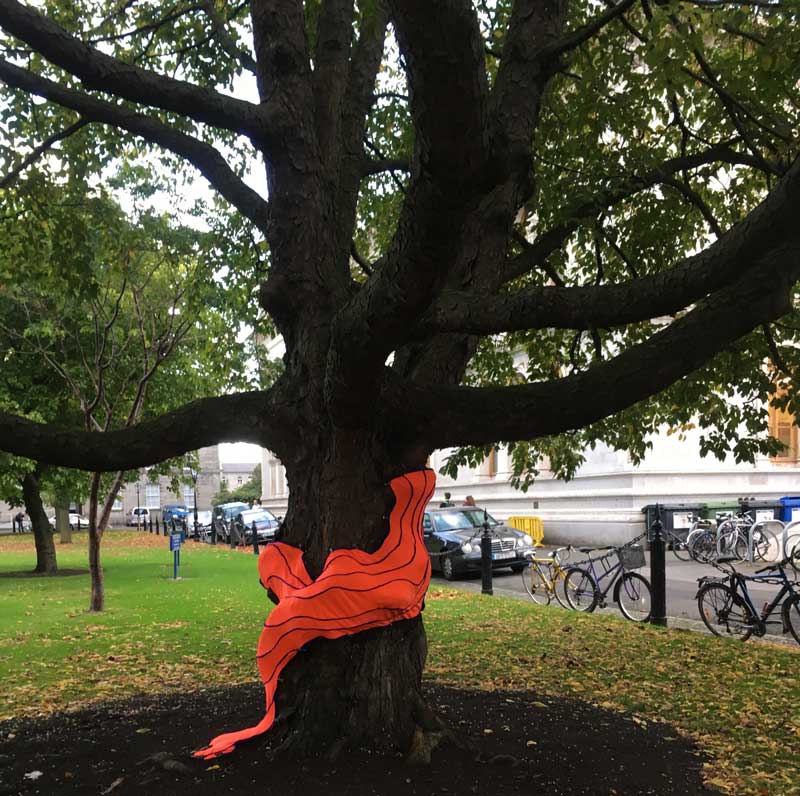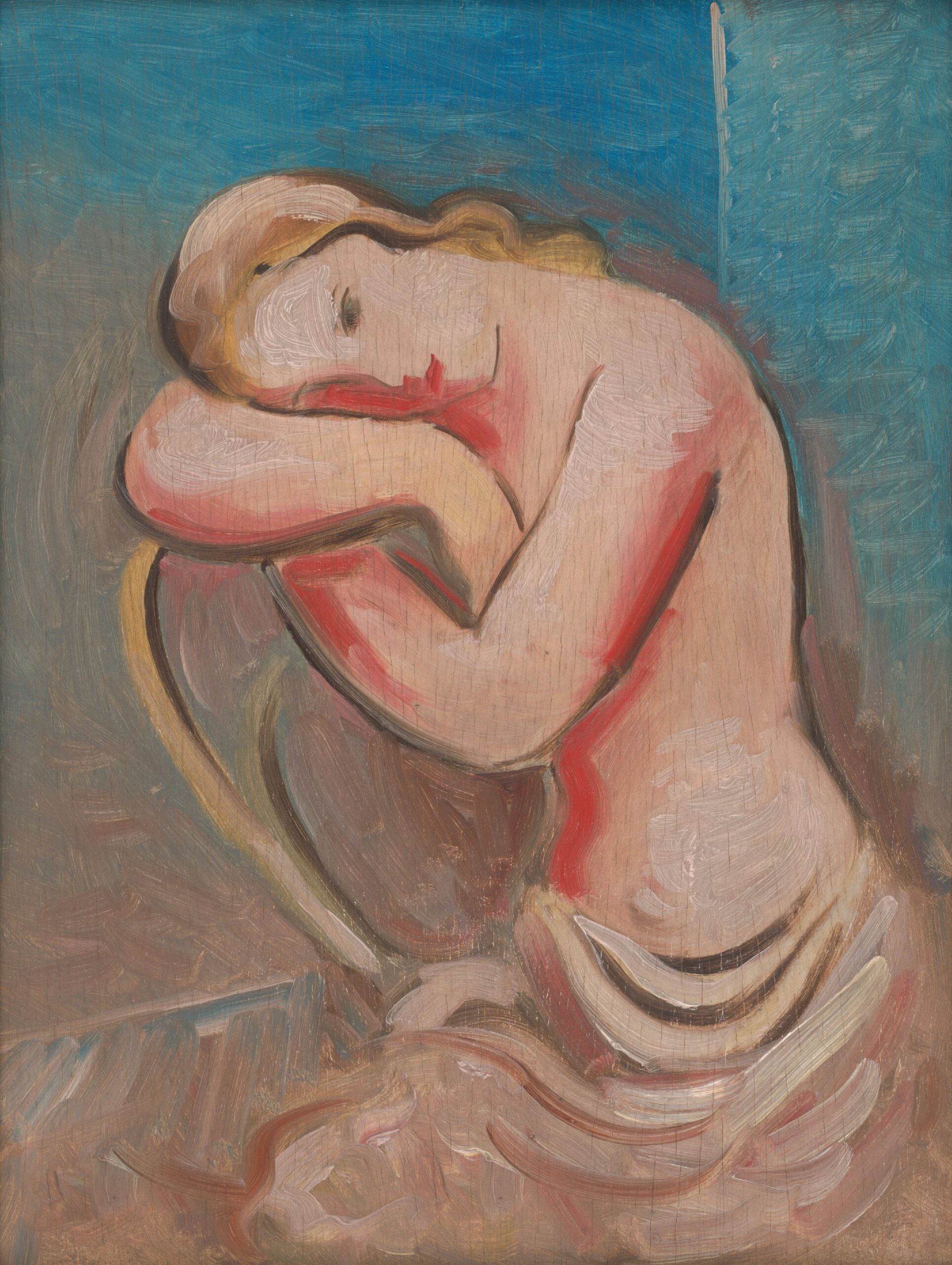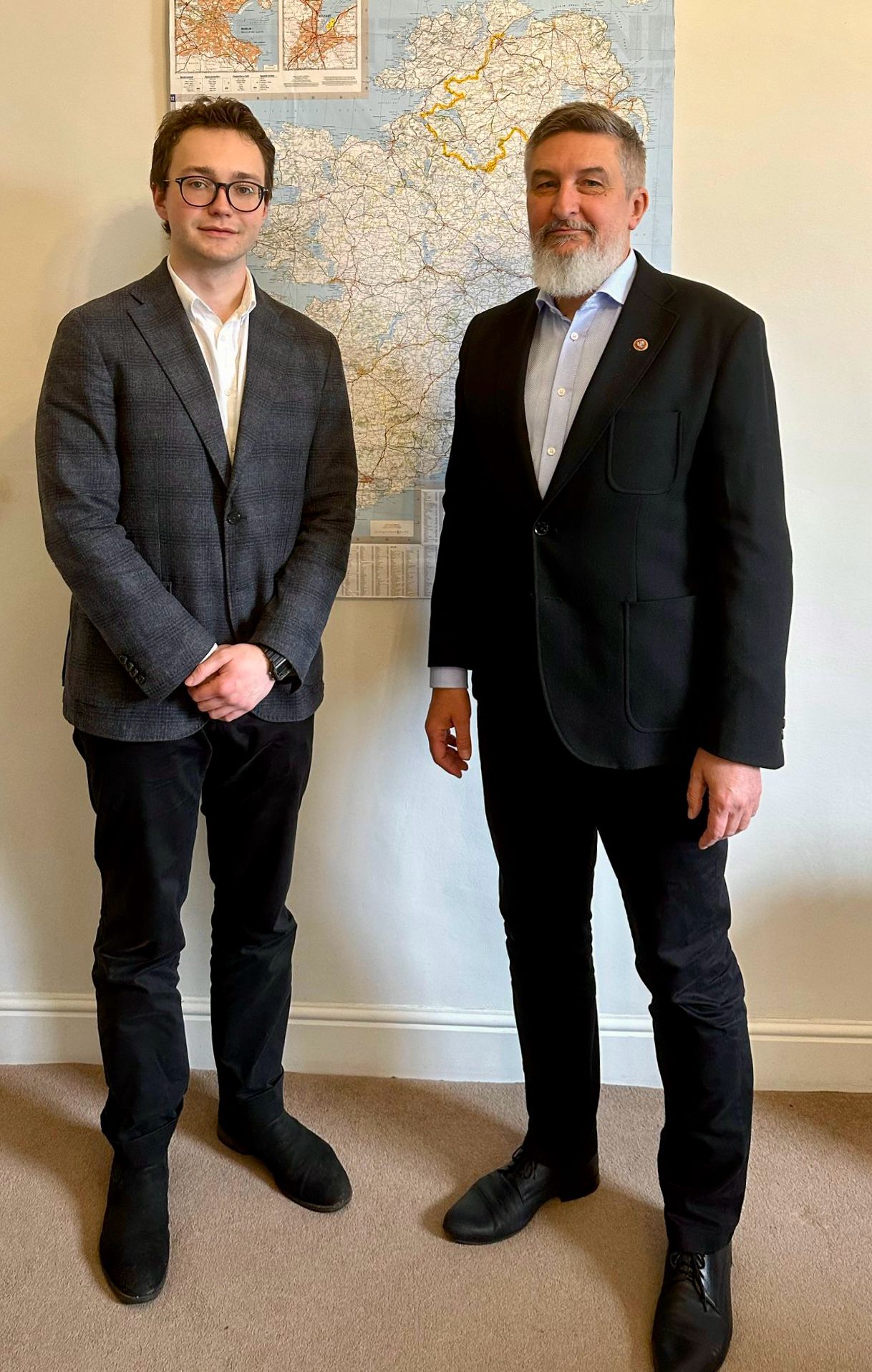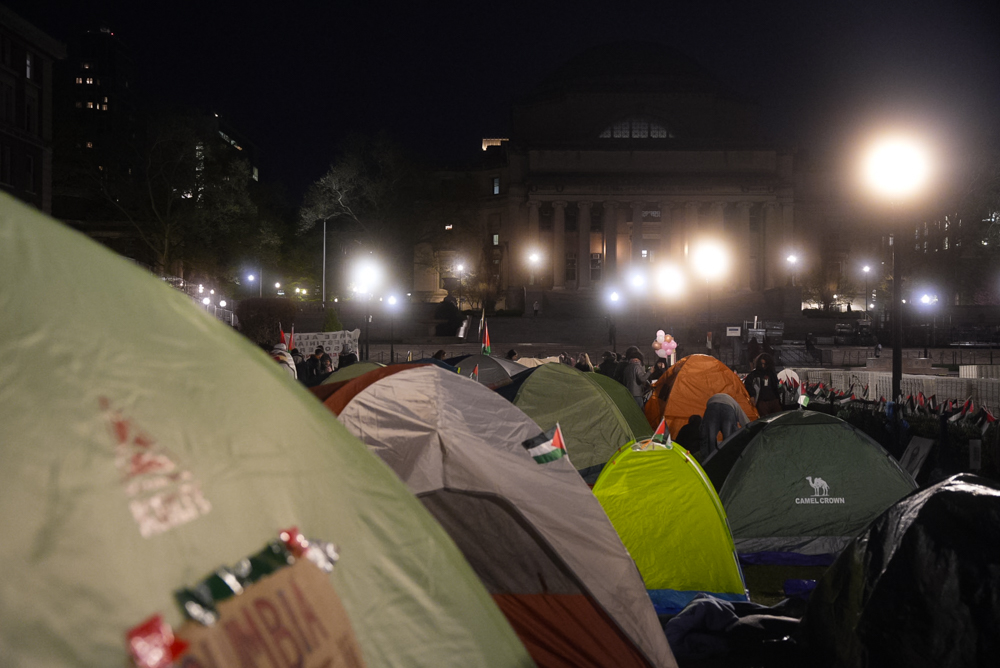
The Trinity College Trees Exhibition, which is part of Probe 2017, was launched this evening with a walking tour guided by its four main organisers, artist Olivia Hassett, scientist David Taylor, Trinity’s tree specialist David Hackett and microscopic specialist Clodagh Dooley. Hassett drew inspiration from enlarged microscopic pictures of eight of Trinity’s trees taken by Dooley and used these images to create unique art installations for each of the trees.
The exhibition is easy to miss and is dispersed throughout Trinity’s campus, with the first installment by the Graduates Memorial Building (GMB) and the last adjacent to the Hamilton Building on the east end of campus. Whether you’re walking to a lecture or have a spare hour to walk around campus, the exhibition is engaging, pleasant and admirable in its execution, considering the minimal intervention yet distinctive nature of the works.
The first instalment is unassuming, and the use of neutral tones allows the work to fit in seamlessly with the natural colours of the landscape. The Oregon maple tree, or acer macrophyllum, acts as the canvas for this first stop. The work is based on scanning the cell of the structure of the tree’s twig. Interestingly, the movement of the wind in the art installation’s structure mimics that of the cell’s reaction. The first tree creates an engaging platform that works well alone and alongside the rest of the installations.
In stark contrast to the first in both form and use of colour, the second art installation, which is located adjacent to the Rubrics, offers a different interpretation of the project. While the first used natural colours that blended easily with the environment, in the second piece the artist used fluorescent green and pink, which were intriguingly inspired by 1990s Japanese pop. Dooley explained that the work is based on a microscopic image of a symbiotic fungal growth. The growth, which is not native to the tree, is well represented by the pink and green foreign body that appears almost out of place. This art piece in particular is striking and well thought out.
In the Rose Garden, a selection of fluorescent orange plexiglass fragments dangle from a crab apple tree. This particular work is simple, yet curious, and differs in execution from the others. The artist spoke to various members of the public sitting on the benches in the garden and asked them to write down what they think of the area. It’s these various small texts that Hassett etched into plastic and then hung from the trees by pieces of string. The text is easily readable when taking a closer look at the tree, and the use of the public’s thoughts in this installation creates a more personal connection with Trinity’s trees. Again, the use of colour here is striking. However, rather than appearing out of place, the use of neon orange merely draws the viewer’s attention.
The installation near the Physiology Building provides a playful interpretation of Trinity’s famous cherry blossom trees. With the trees flowering in the autumn or early winter, the inclusion of this particular tree felt appropriate considering the time of year. The artist took inspiration from the flowers, which is evident, as well as the pollen grains, alluding to the pollination and continuation of trees.
One of the most striking elements of the exhibition is how the artist was able to take unique and unseen elements from each of the trees and bring them to life through distinctive works. The works, while individually impressive, work well in succession. Those involved in the execution of this art installation are passionate, whether in the caretaking of trees, the science behind the project, the creation of the works on display or the technology to create the microscopic images, which was evidenced in the guided tour. The exhibition’s tagline, “making visible the invisible”, is apt, bringing to life that which cannot be seen through impressive and striking installations.






